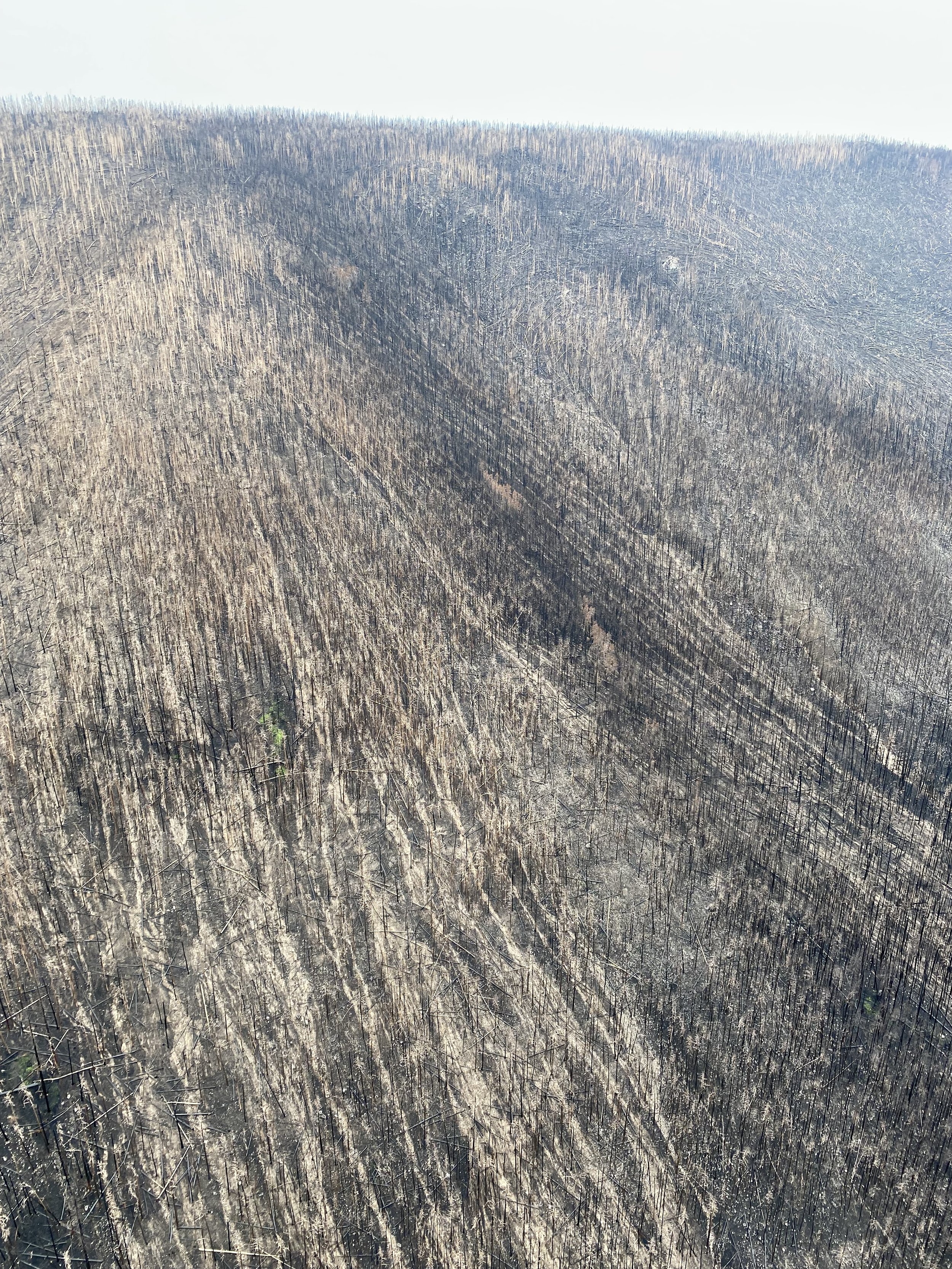
HAZARD:
Hillslope Erosion
-
Before a fire, trees and shrubs along with the leaves, sticks, and organic material that normally covers a forest floor all work together to catch and soak rainfall into the soil below.
This protective ground cover is often burned in a fire and, along with an increase in water repellency of the burned soil itself (hydrophobicity), less rainfall is absorbed into the soil and it instead runs off along the ground leading to more erosion of soil.
Additionally, without a protective cover, the soil is directly exposed to raindrops which can fall with enough force to dislodge and mobilize soil particles.
-
Hillslope erosion can have direct impacts to infrastructure, such as roads, trails, and even building foundations—especially when flows begin to condense into gullies. This can have impacts on access and safety.
Additionally, downstream deposition of the eroded soil can clog water infrastructure, diversions, ditches, and cause problems with municipal water intakes and treatment processes.
Furthermore, hillslope erosion negatively impacts and delays the re-vegetation of burned areas, which can alter the species, quantity, and vigor of surviving plants and the native seed bank.
-
Communities should conduct a baseline conditions assessment to identify the most vulnerable hillslopes that are connected to stream corridors and near to or upstream of other at-risk assets.
Additionally, communities can:▶ Incorporate soil erosion and deposition hazards into Watershed Hazard Mitigation Plans.
▶ Develop priorities, concept designs, and implementation recommendations for a post-fire scenario that are appropriate for your watershed.
▶ Identify restoration, infrastructure retrofits, and other pre-wildfire mitigation projects.
▶ Reverse a century’s trend and begin the process of restoring beaver and wood back into stream corridors, and reconnecting degraded floodplains. These elements of stream corridor restoration provide a multitude of benefits in non-fire-impacted landscapes and become even more important when fires do occur as they can capture and store eroded sediment.






